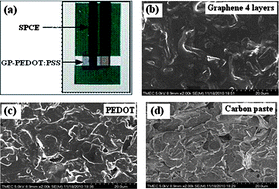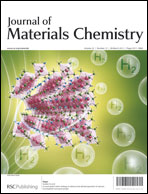Inkjet-printed graphene-PEDOT:PSS modified screen printed carbon electrode for biochemical sensing
Abstract
In this work, a novel method for electrode modification based on inkjet-printing of electrochemically synthesized graphene-PEDOT:PSS (GP-PEDOT:PSS) nanocomposite is reported for the first time. GP-PEDOT:PSS dispersed solution is prepared for use as an ink by one-step electrolytic exfoliation from a graphite electrode. GP-PEDOT:PSS layers are then printed on screen printed carbon electrodes (SPCEs) by a commercial inkjet material printer (Dimatrix Inc.) and their electrochemical behaviors towards three common electroactive analytes, including


 Please wait while we load your content...
Please wait while we load your content...